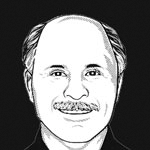Exchange traded funds have become a favorite way for hedge funds to bet on the direction of the overall market or a specific sector. In fact, ETF’s represented the largest holdings among a number of funds in the first quarter, according to the latest SEC filings.
Is this a lazy way for someone who commands huge fees to play the market, or is it shrewd? Probably, a little bit of both, investors in hedge funds tell me. After all, many of the managers who aggressively use ETFs get at least 2 & 20, and in some cases higher fees. However, ETFs are an efficient way to make a directional bet as well as to hedge the market, as long as they use one of the liquid, heavily traded funds.
Macro and multi-strat managers seemed to be the most aggressive users of the ETFs. For example, an ETF that tracks a basket of gold stocks was the number one holding of Paulson & Co.’s John Paulson. Jana Partners’ number one holding was a call option on a gold ETF.
Others, however, made big bets on a number of ETFs in a variety of ways. For example, at the end of the first quarter, Perry Corp.’s Richard Perry had a put on the ETF that bets on the direction of the S&P 500 valued at $615 million. However, this was nearly half the value of its put on the same index at year-end. At the same time, he nearly tripled his put on the ETF that tracks the Russell 2000, a basket of small stocks. Unfortunately, smaller stocks outperformed large ones in the first quarter. Even so, Perry was up about 7 percent in the first quarter while the S&P 500 was up 5 percent, suggesting the rest of his portfolio did well.
In the first quarter, the two largest U.S. equity holdings of Moore Capital’s Louis Bacon, a macro trader, were the common stock and call options of an ETF that tracks the S&P 500 index. In addition, he simultaneously bought the common stock, as well as equal values of call and put options on ETFs that track emerging markets in general and China specifically. Many hedge funds prefer using just calls and puts to play ETFs.
The second largest holding at the end of the first quarter of Eric Mindich’s Eton Park was a put on an ETF betting on emerging markets stocks. In the first quarter, Chase Coleman of Tiger Global took a large put position on PowerShares QQQ, which tracks the Nasdaq 100, making it his number one holding. He did not own any ETFs the prior quarter.
Perhaps the most aggressive user of ETFs is Traxis Partners, headed up by former Morgan Stanley strategist Barton Biggs. At the end of the first quarter, he held a dozen ETFs, and six of them were his largest holdings, including funds that specialize in health care and Brazil. Other small ETF positions specialize in India, Thailand, Taiwan, and Japan. Biggs’ largest portfolio holdings were in two ETFs — iShares FTSE/Xinhua China 25 Index Fund, which tracks the performance of the FTSE/Xinhua China 25 Index, and an ETF that tracks the Nasdaq 100.








